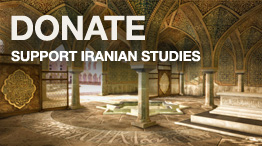Abstract;
This paper focuses on the significant differences between the Iranian foreign policy orientation, and behavior towards the Eurasian region (ER) in comparison to the Middle East system (ME). The available research provides single-case studies or a sketchy regionalist approach. My objective is to compare the impact of the structure of international power in the two regions. I argue that in the context of similar factors, such as religion and energy competition, the Iranian pragmatic, accommodative, state-to-state approach in the ER stems from a different regional power structure than that in the ME. The hegemonic position of the US in ME, and the hostility of the Arab states, present serious impediments against the integration of the Shiite Persian state in the ME. ER, on the other hand, provides a greater opportunity for Tehran to exer influence as a major regional player, situated on the crossroads of the Caspian Sea, Central Asia, South-West Asia, the Persian Gulf, the Caucasus and the Arab world.
I argue that the abandonment of the Neither-East-nor-West orientation of Iran in its dealings with the ER stems largely from its shared counter-hegemonic policy (i.e. directed against US expansionism in Eastern Europe, Caucasus and Central Asia), with the two key players: Russia and China. Iran’s sense of isolation in the Middle East, her sense of insecurity and her active pursuit of nuclear energy, drive her into accommodating the interests of these two superpowers. This mutual accommodation has been reflected in the Security Council, the Governing board of IAEA, and the Shanghai-5 organization, as well as in Iran’s positive role as a broker in the regional conflicts and as extensive regional economic partner. There are, however, serious challenges ahead in the way of further Iranian integration in the ER; namely the evolution of the Iranian nuclear energy program, the legal status of the Caspian Sea resources (and transit roots), and to much lesser degree the possible resurgence of Pan-Turkic nationalism. My paper is based on both primary and secondary sources in four languages: Persian, Arabic, English and French.
Posted in
